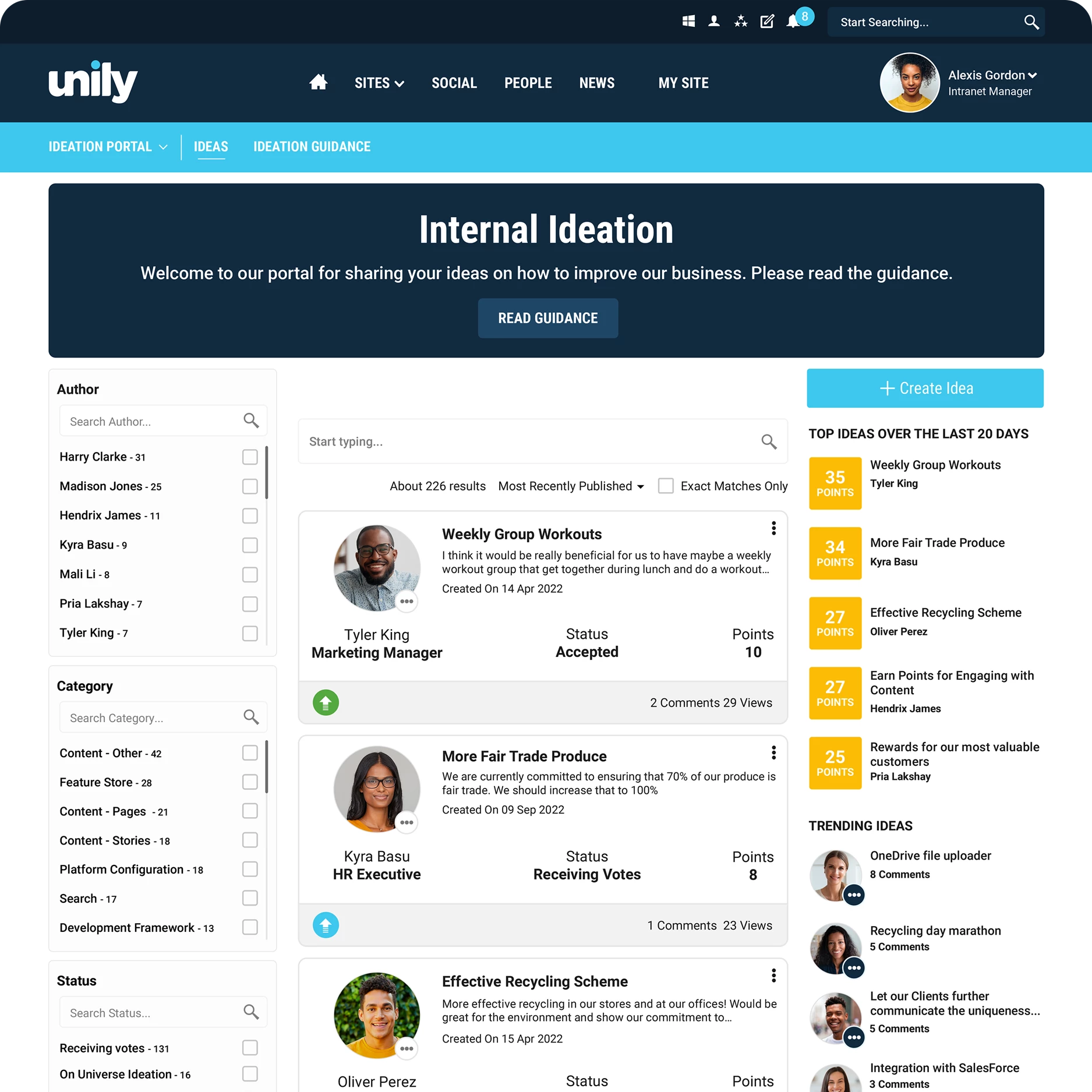11 IT trends that will drive CIO success in 2021
2020 has been a demanding year for organizations and those in charge of business operations. For CIO’s, it’s been a year of testing their IT infrastructure and reviewing the efficacy of the business’ digital transformation efforts to date. For 2021, the biggest task will be transforming business operations to align with post-pandemic disruptions, and for CIO’s it will be creating the digital infrastructure to support – but what are the IT trends that will pave the way for business success in the year ahead?

The 2021 tech landscape for CIO’s
As a result of the COVID-19 pandemic, the CIO’s relationship with the business has become stronger than before. Many are now able to play a pivotal role in digital business acceleration, with 70% of CIOs now assuming the leadership of high-impact initiatives.
After dealing with an unparalleled volume of digital transformation in 2020, CIO’s will now have to continue this over the year to come, overseeing some of the somewhat hurried transformation efforts and helping to shape not just the technology, but the company culture, business success metrics, and workflow too.
Understandably, budgets became tighter for IT throughout 2020, and although it’s expected this will improve in the year to come, Gartner predicts this may only be by 2%. The uncertainty combined with potential budget restrictions means CIO’s are expected to be doing more with less.
Taking this into account, there are some notable trends that CIO’s should pay attention to in order to best transform business operations in 2021.
#1. Resources will be redirected to focus on digital innovation
The increase of budget in 2021 comes hand-in-hand with an influx of spending across the board. But organizations that managed to outshine others performance-wise over the year will have got a jump on it already in 2020, already putting them ahead of competitors. Companies that have already increased their funding of digital innovation are 2.7x more likely to be top performers.
To compete, CIO’s should take into account the budget they have and look at reallocating more of it into funding digital innovation. It’s important to stay ahead of the curve and even more so in the current climate. One sure-fire way CIO’s can look at becoming digitally innovative on a budget is by capitalizing on a well-designed and planned digital workplace.
A digital workplace with an intranet at the center can aid in optimizing investments by helping in areas previously unconsidered. Having a centralized system brings disparate workforces together – no matter where they may reside – encouraging employees to become more productive in their business work. Employee happiness should be a business priority, and the CIO now plays a pivotal role in the overall employee experience. By investing in a workplace that is digitally reliant, the employee experience will become heightened and will consequently put the organization on a more competitive path.
#2. A bigger demand for new technologies
In 2020, 76% of CIO’s reported an increase in demand for new digital products or services during the pandemic, and 83% expect this demand to only increase further in 2021. This comes as no surprise, and CIO’s should be continuing to seek out technologies that will help further the business on its digital transformation journey both during and post-pandemic.
One such aspect CIO’s should consider in the new year to aid the business in progressing on its journey, is upgrading their digital employee experience (DEX). To put it simply, digital transformation for the business starts with the employee experience – after all, a business is only as good as its employees. Organizations that are pioneering a digital strategy and experience for their employees will undoubtedly see more success and ROI, especially around attracting and retaining talent, than organizations that don’t.
“CIO’s that have secured increased funding for digital transformation in 2021 will likely to be able to adapt better to the uncertainty created globally by the pandemic compared to those that haven’t," comments Sam Hassani, CTO at Unily. "Having the necessary budget available will allow organizations to invest more quickly in technology where it matters the most – keeping the workforce better connected, aligned and engaged with the organizations strategic goals."
#3. Learning to fail is key
Having the ability to fail forward is something that CIO's should be embracing. As circumstances continue to shift at pace and with unpredictability setting the tone for the year, an openness to experimentation will be key to navigating the challenges ahead. It's almost impossible to learn and grow without making a few mistakes. Being able to take risks and remaining agile when things go wrong will allow CIO's to stay ahead of the curve and create an IT strategy that works for their business.
“CIO’s that are given adequate budget and leadership-trust will be able to not only take greater risks but also to counter that understanding and learn how to fail fast, something that is becoming increasingly important," explains Hassani. "Without the constraints previously imposed, making mistakes and learning from those faster will be critical in not losing momentum over the coming year.”
#4. Trust will become integral to business success
Trust is fast becoming one of the key factors for a successful organization. Workers at companies where trust is high report 106% greater energy in the office, 74% lower stress levels, 76% greater engagement, and 50% more productivity than their peers at low-trust businesses.
So where does the CIO’s responsibility fit into trust? Technology can help enable and determine trust for both employees and customers, and so organizations – led by the CIO – should be investing both time and money into this initiative. Cybersecurity technologies can begin to build this trust, but a comprehensive internal communications strategy is vital to verify it.
With the uncertainty surrounding the pandemic, it’s more important than ever that employees trust their employer. This sentiment will continue to build during the return to work process, as employees look at their employer for policy updates, information on safety protocols, and new insights. CIO’s implementing the right technology will ensure that users get personalized updates during their return to the workplace that is relevant to their role and region, as well as insights from senior leadership to keep employees aligned – establishing and ensuring trust in the process.
#5. The shift to cloud-centric will accelerate
By the end of 2021, based on lessons learned, 80% of enterprises will put a mechanism in place to shift to cloud-centric infrastructure and applications twice as fast as before the pandemic. CIO’s will be driving this shift to remain competitive and stay digitally sustainable.
The most obvious reason behind this drive towards a cloud-first initiative in 2021 is the death of the office. As a result of COVID-19, the office as we once knew it has changed forever, and more organizations than ever before will have adopted some type of flexible and remote working strategy for their workforce – even as we look ahead to post-pandemic plans.
CIO’s will need to build on this success by optimizing their cloud investments. With myriad collaboration and productivity suites now in use, the challenge will be bringing these vital tools together into a seamless digital experience. This is where the intranet or employee experience platform comes to life. A modern intranet can overcome the challenges of a disparate technology landscape by drive adoption and best-practice use of an enterprise’s technology investments.
An example of this is how The Adecco Group in France was able to increase the best-practice adoption of Microsoft365 tools across their organization by using their intranet as a launchpad to productivity apps.
"Previously our people were sending hundreds of e-mails to collaborate on documents. Now, with Unily Social, Microsoft Teams, and the document center, we have seen a change in behavior that has happened naturally."

#6. Focus on frontline workers
By 2022, 65% of CIOs will digitally empower and enable frontline workers with data, AI, and security to extend their productivity, adaptability, and decision making in the face of rapid changes. Putting more focus on frontline workers is essential to get real-time insights into customer behaviors, trends, and exterior conditions. They are the workers that keep the organization churning daily, so it’s only right that they are invested in.
There are many tools and technologies out there that CIO’s can turn to so that frontline workers have everything they need to stay on top of their game, but one of the most essential is implementing a mobile internal communications solution. This can provide a direct route of communication from the CEO down to the on-the-ground worker – and can also be linked into HR systems – meaning anyone can rapidly convey any updates and important information to employees that aren’t sat at a desk all day.
#7. Technical debt will become a real problem
Due to having to react quickly to changing business requirements in light of this year, many CIO’s will have had to shortcut their usual IT procedures to get new technology solutions implemented – at times literally overnight. Technical debt has been unavoidable in many circumstances this year, but if left to continue to grow it can ultimately become an unsustainable hindrance to IT.
According to Gartner, leaders who actively manage and reduce technical debt will achieve at least 50% faster service delivery times to the business. CIO’s should be looking for opportunities to consolidate the IT they have and retire the unused or duplicate technologies. As the native capabilities of intranets advance at pace, it is enabling duplicated technologies to be retired, and existing technologies, such as Microsoft Stack, can be amplified and utilized to their full extent through integrations.
The intranet is also enabling enterprises to d consolidate the varied applications, technologies, and tools the organization uses into one, centralized system – saving time and money overall.
#8. There will be a refocus on IT leadership
Over 2020, 70% of CIO’s said they deepened their knowledge of specific business processes to advise the business. Essentially, this means the better CIO’s perform for their business, the more the business will ask of them. Businesses will be making higher-value, more strategic requests, and this will continue long into 2021.
This re-focus on IT leadership will see CIO’s step more into the spotlight and can use this to their advantage to guide the business while on its digital acceleration. In this position, CIO’s should be making sure they know exactly what is going on within the business and should be listening to and taking on-board any ideas that employees have. One easy way to do this is through ideation.
Ideation is a way for employees in any part of the business to share suggestions and can be done through the business intranet. It’s a great way for everyone to have the chance to make a difference, no matter which team they reside on. For CIO’s to encourage the employees to share their ideas, the workforce as a whole will flourish, collaboration will increase, and the road to becoming truly digital may become streamlined.

#9. AI and automation will become prominent
Artificial Intelligence (AI), Machine Learning (ML), and automation have all risen in prominence over the years. 32% of CIO’s and CTO’s said that AI and ML will make the most impact on the technology landscape next year, and COVID-19 has undoubtedly played a large role in this.
57% of organizations say they are at least piloting automation of processes in one or more business units or functions, which come as no surprise, as it’s been found that 30% of IT decision-makers say that automation is a key business initiative tied to digital transformation. Taking all of this into account, CIO’s should be thinking about how they can best utilize AI and automation in their business.
This doesn’t necessarily mean that all money to hand should be spent on AI – there are subtle ways of including automation in daily tasks that don’t blow the entire IT budget, yet still reap the benefits of productivity and time saved. One such example of this is automating the act of creating and aligning metadata, which can also lead to costly manual errors that make it increasingly difficult for people to discover your content and information online. Implementing a system, such as one that utilizes Azure Media Services, to power native video capabilities will mean metadata is automatically extracted – and meaning adding videos and allowing them to be discovered quicker and easier is as simple as clicking a button. AI-based analysis does all the hard work for you, saving you time and money.
#10. Cybersecurity threats will continue to evolve
The rapid shift to remote working bought with it a shift in cybersecurity threats. New security challenges have continued to evolve over the last 12 months, seeing scams increase by 400% over March alone, making COVID-19 the largest-ever security threat.
With employees working remotely, it’s more important than ever that they are educated and up-to-date with all security practices, to ensure the business is secure. 76% of remote workers say working from home would increase the time to identify and contain a breach, so CIO’s should be thinking about how they can reduce this time and guarantee employees have everything they need to not become an insider threat.
Again, having an intranet can come in use. Employers can use a centralized hub to share information, training, and tips for employees to read and stay safe. It can also help increase security by offering comprehensive testing capabilities to keep all information secure. Features such as authenticator apps, Face or fingerprint ID, and vulnerability scanning enables peace of mind and can safeguard enterprises against security threats.
#11. Employee experience needs to be invested in
2020 has shown how important it is for an organization to look after its employees. It’s been a tough year for many, with more than 60% of adults admitting their mental health worsened during the lockdowns. Mental health has always been a topic that employers feel uncomfortable about discussing, and so CIO’s should take this opportunity to implement technologies that can bridge this gap.
CIO’s focused on improving employee experience will help their firms attract, develop, and retain talent that can provide a competitive advantage in a critical year. Not only is this beneficial for the business, but improving the employee experience will only ever have a positive impact on employees and their mental health.
The need for communication and connection has never been higher. It falls on digital technology to underpin every enterprise’s efforts for guidance and support. CIO’s should invest in technologies that lead to creating a mental health hub, offering a solution that can be utilized to address and solve a host of challenges.
Transform your business operations in 2021
As organizations look to ride out the downward peak of the pandemic and explore the new future of work, CIO’s will be crucial to ensure the business’ success over the next decade.
Get started. Get your personalized demo.
Discover how an employee experience platform can help achieve your goals.
















